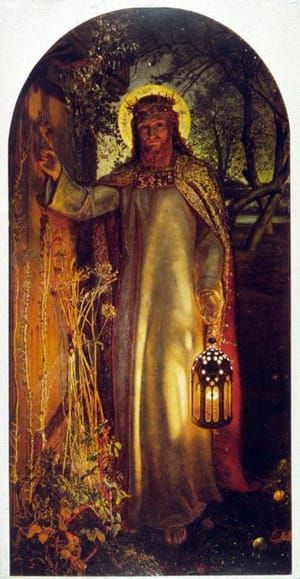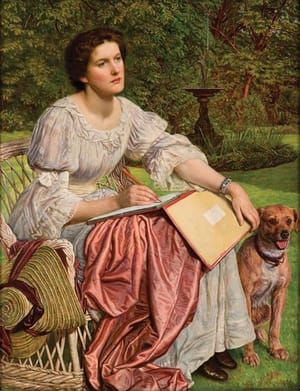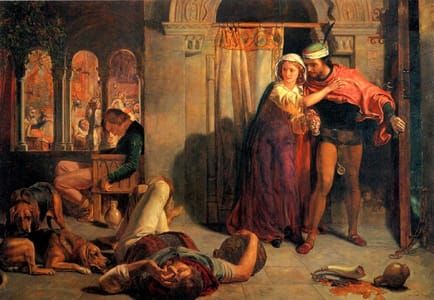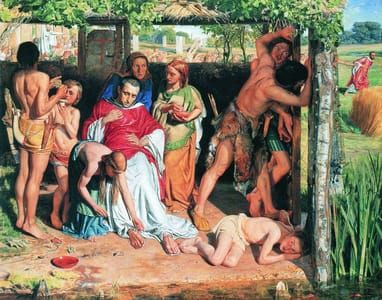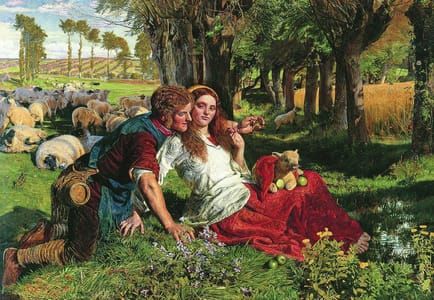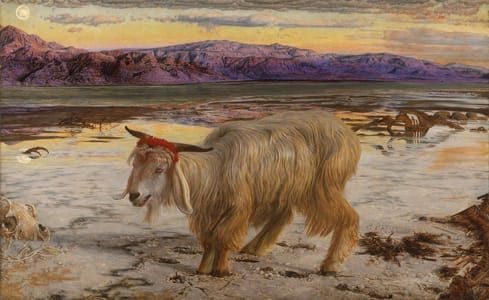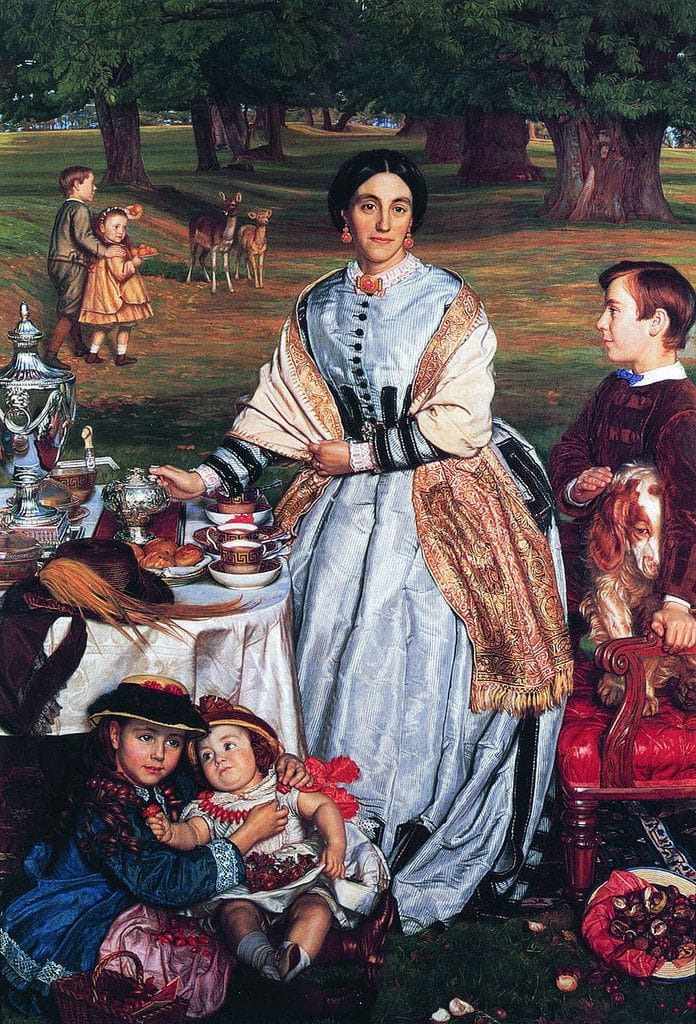

The Children's Holiday, 1864
William Holman Hunt
Victorian industrialist Thomas Fairbairn, later knighted, commissioned the portrait of his wife Allison and five of their seven children (clockwise from right): Thomas, James, Florence, Mary and Reginald. Their two elder children, Constance and Arthur, had been immortalised in a life-sized statue a few years earlier. With the wealth earned from his Manchester factories Fairbairn was able to support a number of artists, including William Holman Hunt, whose patron he became. (http://www.torre-abbey.org.uk/collections/collections-spotlight-2/collections-spotlight)
This outdoor family grouping has, as its main focus, a centrally placed female adult. Dressed in a white satin day dress, trimmed with black velvet and white lace, the woman faces the viewer as she pours tea. Her black button-fronted dress is gathered tightly at the bodice, the lower portion is expanded with crinolines. Coral, set in gold surrounds, is worn as jewelry. A fringed paisley scarf-shawl surrounds her shoulders.
The table to her right is set for afternoon tea. A starched white tablecloth covers the table, and the woman’s feathered hat rests on the table’s edge. Tea is dispensed from a large and classically designed silver urn into a patterned silver teapot. Teacups, with a Greek key design and holding silver spoons, wait to be filled. Several dishes of fruit and scones will complete the refreshment.
Five children and a dog surround the woman. In the lower left foreground, two well dressed young girls make rose hip necklaces. They wear straw bonnets trimmed with lace and ribbons. To the right, a bonnet filled with chestnuts lies idle. Immediately above, a young man leans on a wooden chair with a tufted seat. He is well groomed, and pets his dog that sits on the chair. In the left middle ground, a young girl and boy – also well dressed - walk towards two deer with a plate of oranges.
A large avenue of green trees directs the viewer’s eye to the background, revealing a broad expanse of well-manicured lawns. The soft mottled textures of the lawns create a sharp contrast to the hard-edged and detailed elements of the figures in the foreground.
Background
Surrounded by her children, this well dressed woman with her family is an example of conspicuous consumption in the late 19th century. This commissioned family portrait was intended to hang in the country home of a wealthy collector. It serves as a portrait of the estate as well as of the wealthy family.
Indications of ‘the well dressed woman’ of the 1860’s were as follows: Dresses with fitted bodices (indicating a tightened corset worn underneath), crinolines to broaden the skirts thus creating a triangular silhouette, plain and opulent fabrics trimmed with black velvet to soften the lines, and lace or cut work embroidery for added decoration. In this image, the mother is fashionably dressed for a relaxing afternoon spent on the lawns of her estate. In addition, she wears valuable coral jewelry (from Italy) and a paisley scarf woven with expensive shiny silken threads.
Material wealth is indicated in the silver tea service, well-dressed table and open length of lawn. The opulent lifestyle of the family at leisure is softened with the children’s own activities. The young girls create ‘jewelry’ from natural elements – bright red rose hips. The young man pets his possession, his faithful dog. The two children in the rear feed oranges to their estate’s tame deer – indicating a control of the creatures of the land. (http://www.netnicholls.com/neh2001/pages/aspects7/74frame.htm)
© 1864 William Holman Hunt
William Holman Hunt
artistArthur
coming soon

